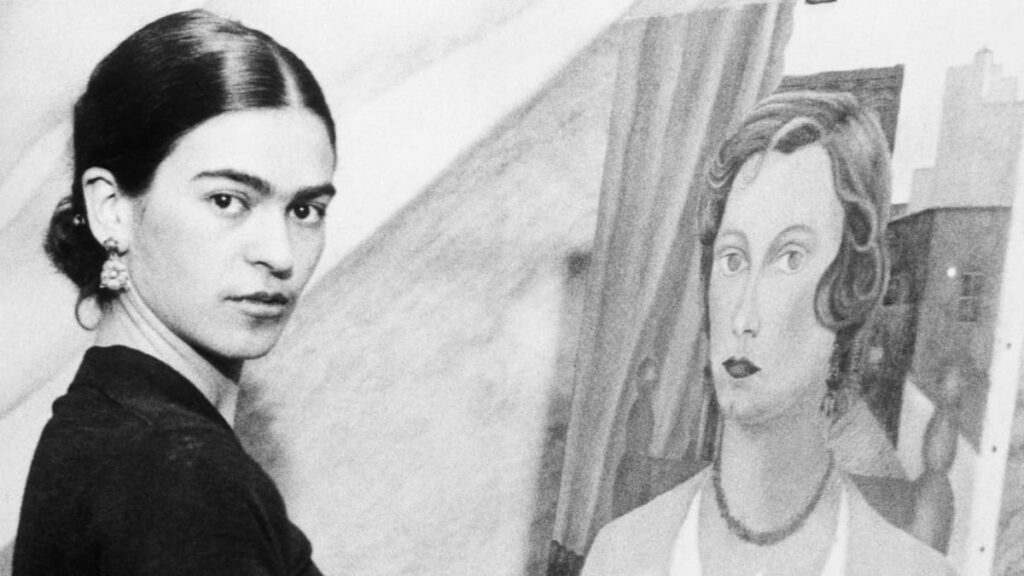
Born in 1907, Frida Kahlo was a Mexican surrealist painter who was inspired by Mexican history, society, and culture. At the age of eighteen, Kahlo was in a tragic traffic accident, which left her with chronic pain and medical problems after an iron handrail impaled her. It was while she was recovering from this accident that she began her painting career.
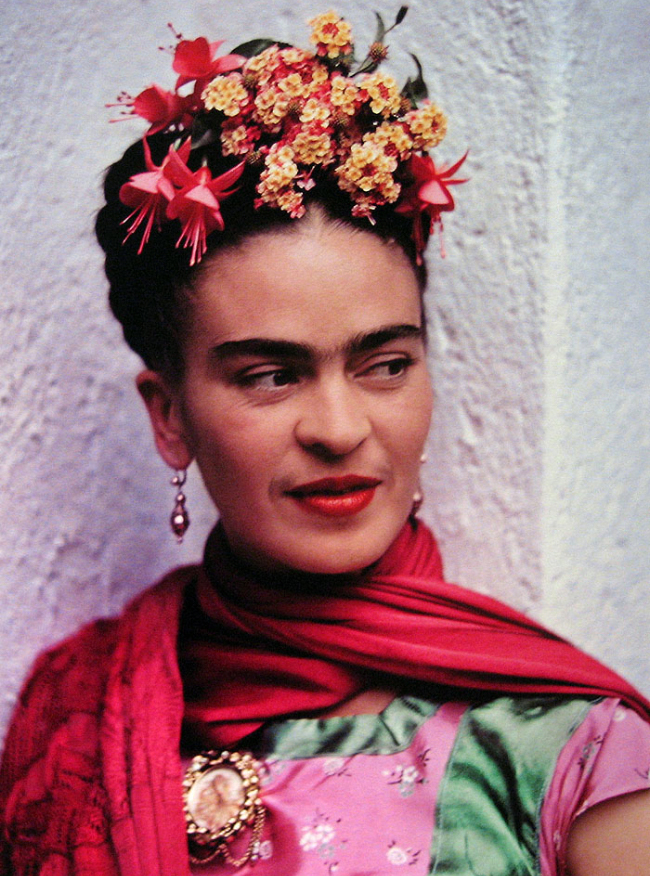
Photo credit: Muray, Nickolas. From Oatman-Stanford, Hunter. “Uncovering Clues in Frida Kahlo’s Private Wardobe.” Collectors Weekly, 1 February, 2013. Accessed 17 March 2021, https://www.collectorsweekly.com/articles/uncovering-clues-in-frida-kahlos-private-wardrobe/
Kahlo was very involved politically and was associated with the Mexican Communist party, through which she met artist and future husband Diego Rivera. The two had an open relationship and both had extramarital affairs.
She spent the last years of her life in bed rest, battling pain caused by the traffic accident. Kahlo died in bed in 1954 due to a pulmonary embolism. However, there has been speculation as to whether she committed suicide due to physical pain and complications in her marriage. Kahlo’s legacy goes beyond the art world; she is remembered as an iconic figure for Chicanos, feminism, and the LGBT community. Her starkly personal works, rendered in an inimitable, unflinching style, are a testament to both her personal strength and the power of her artistic vision.
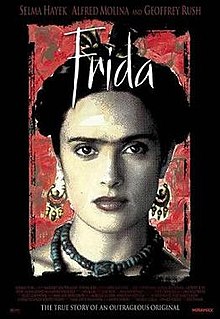
Frida (2002), directed by Julie Taymor, is a dramatic film depicting the life of Frida Kahlo (played by Salma Hayek). The film follows her artistic development and focuses on Frida’s private life. Throughout the movie one can see Frida’s carefree spirit destroyed by the pain from her accident and her husband Diego Rivera’s infidelity. The film portrays some of Frida’s most famous artworks.
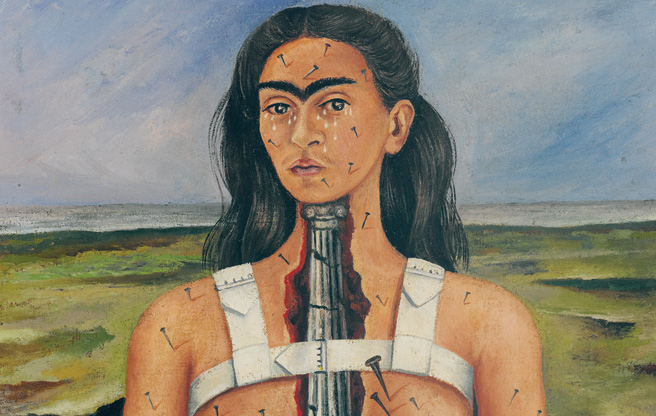
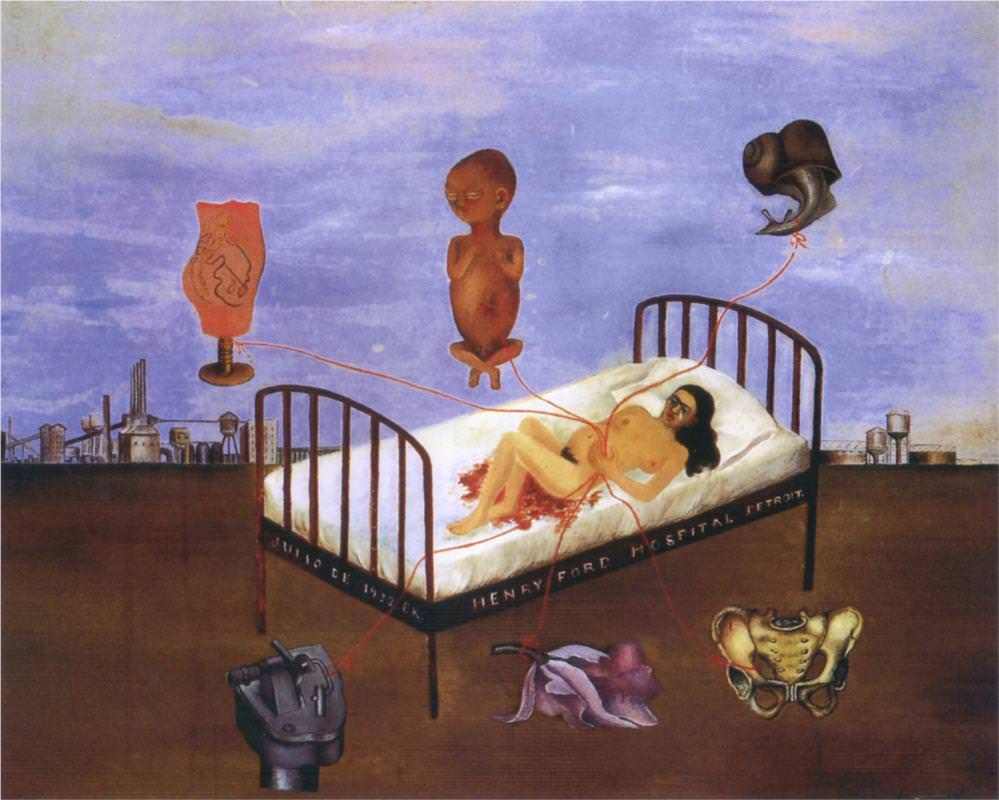
Some of her early portraits, painted right after her accident, can be perceived as brutal and grotesque. They reflect her broken body and spirit, caused by the accident that left her bedridden for months. Photo credit: fridakahlo.org. 17 March 2021, https://www.fridakahlo.org/henry-ford-hospital.jsp
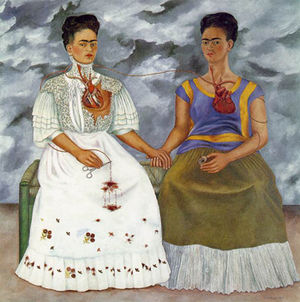
Her husband’s infidelity also had a big impact on her life. In the movie, Frida says to him to be “not faithful, but loyal.” This allowed for their open relationship and allowed Frida to experiment with bisexuality. In the end, Rivera is not able to be loyal to Frida.
Julie Taymor’s film does a great job of capturing Frida Kahlo’s pain, beauty, vulnerability, and spirit. I highly recommended this movie to anyone who wants to learn more about Kahlo’s life and her art. Frida (2002) is available for check-out at the Media Services. For easy access to the IUCAT item record, just click the film title link that appears just below the Frida film poster above. If you are in Wells Library, make sure to check out our Staff Picks shelf at Media Services for more movies related to Women’s History Month!
Isabella Salerno is a Media Services student staff member who studies Political Science, American Studies, and Sociology.
Leave a Reply